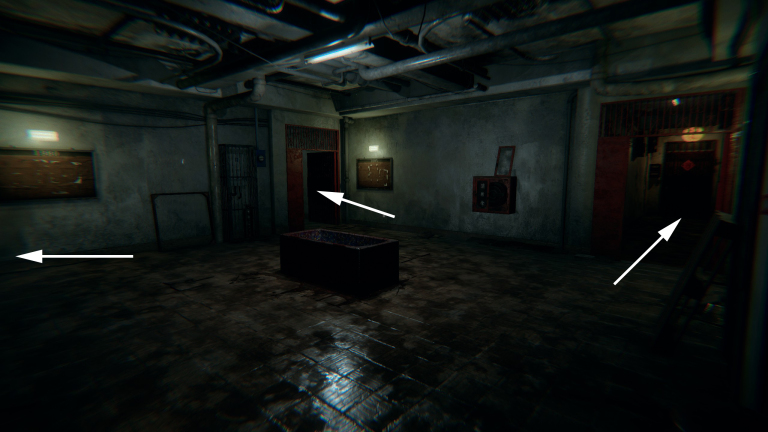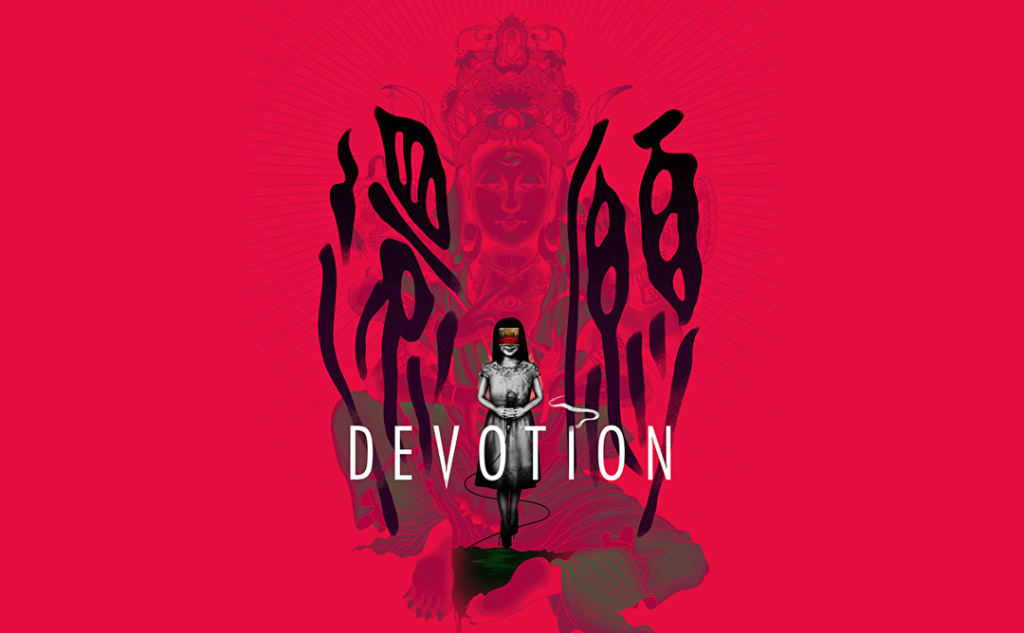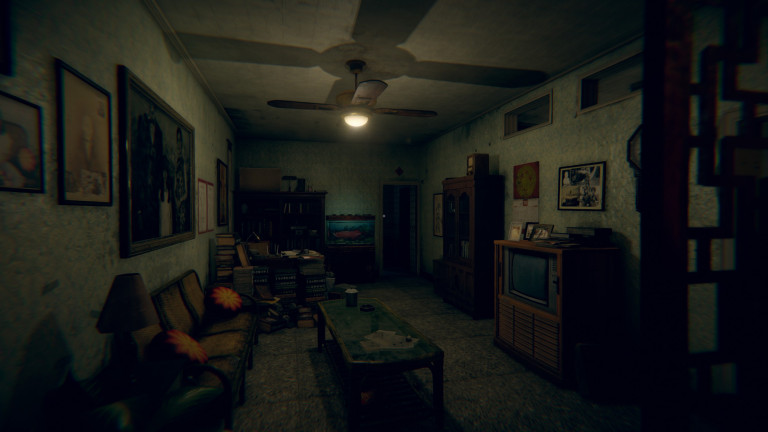If you haven’t played the game and are planning to do so, I suggest you to look away. Spoilers beyond this point. I’m going to post this nice picture here to avoid innocent souls being spoiled.
■ Introduction
Devotion is a horror game developed by Taiwanese developers Red Candle Games. It depicts the tragedy of a family in which the father puts too much expectation to his daughter, and wrongfully places faith into a cult that he thought would help his daughter, thus the title “Devotion”. In the end he is left in misery where his wife leaves him and he kills his own daughter by performing a cult ritual.
Players jump back and forth on the timeline and experience the events mostly through the perspective of the father. In terms of level design, it inherits the idea of P.T., reusing the same level geometry to create eeriness and incite discomfort. Gameplay-wise it bears simplistic controls, where the players spend all of their time wandering around and interact with objects using a single button. Games that bear similar controls include Slenderman and The Return of the Obra Dinn.
P.T. style exploration. Same layout but different placements of objects.
As a fellow Taiwanese game designer, I couldn’t express how excited I was for the game; but I also wanted to observe how people from different cultures would understand the plot, given that the story happens in the 80’s Taiwan. I was lucky to gather a few friends and experience the horror together.
After some time into the game we came to this level where the father has to travel between three times (1980, 1985, 1986) and solve puzzles to continue, and we immediately identified an issue with the game — it’s misuse of indirect control.
■ Defining Direct v. Indirect
The term “Indirect Control” is more popularly used among game designers, and so for its expected counterpart, “Direct Control”, we’ll just try to define it the from other way around.
Here is an extracted part of Lens #72: The Lens of Indirect Control from Jesse Schell’s The Art of Game Design: A Book of Lenses:
Every designer has a vision of what they would like the players to do to have an ideal play experience. To help ensure the players do these things of their own free will, ask yourself these questions…
Jesse Schell, The Art of Game Design: A Book of Lenses
The key part here is “the players do these things (what the designers would like them to do) of their own free will”. I think it’s acceptable to understand this and define indirect control as “telling players what to do without actually telling them”; if this is true, then direct control is simply telling players explicitly to “do this” or “complete that”.
■ So, What Went Wrong?
In the later stages the game transforms itself from a horror game into a puzzle-solving game, and players have to figure out where the items they’ve collected in the game belong; yet the game refuses to lose its original form of horror game, so it continues to include some mechanics that are purposed to create tension and pressure, such as flickering lights on a hallway that would hint players’ to move there.
These mechanics designed to scare players share one feature in common: there is only one switch and one result. The players will only be scared when they move towards the lights. The mannequins will only relocate when players enter the kitchen. Each reaction is triggered through one and only one action.
The bigger issue is that the puzzle events are designed the same way as the horror sequences. Players rarely hold on to more than one item in their inventory, and they only obtain the next item once you’ve put the only item in their bags at the correct location; in other words, the only puzzle is to figure out where the item — not items — belongs.
This design, did not go well with the game since it did not slow the players down. The lock-and-key mechanism only educated players that “you get to proceed if you find the lock”; it also made players think less on the story, and yet this is a story-heavy experience, especially for foreign players who are expected to have less understanding on Asian religious cultures.
The problem didn’t just exist in this particular time-traveling level, but rather throughout the entire game. Why it stood out particularly is that this level required players to frequently exit and enter different-but-same rooms. The effort for traveling, as mentioned above, spiked high in this level. (By the way, the loading wait times between each level was painfully long, and we had to suffer multiple times)

In this particular stage, players have to frequently travel between the three same apartments through the same lobby.
Another moment that demonstrated a similar idea happens later in the game, where the father performs a ritual that allows him to speak with his inner self and to the deity he has been worshiping. As he is about to meet his own consciousness, he is met with two doors:
Only the door on the left is accessible; when players approach the other door, they will hear an extra voice dialogue telling them to go to the other door. I find this moment exceptionally awkward for the following reasons:
Players can clearly see two doors, with one being obstructed. Any player who possesses a slightly higher curiosity will drive him/herself to try opening that blocked door, and yet the game failed to fulfill his/her expectation. The lack of reward for exploration destroys the sense of freedom.
This is more or less related to cognitive psychology, but the general public is trained to scan images and text from top to bottom, from left to right; We often find things aligned to the left more satisfying than aligned to the right. If we apply this observation to this scenario, players will more likely to go directly to the left door without even approaching the right. This makes me question why they put an inaccessible path at a location where not many people will visit based on instinct.
If you put a door there deliberately and tell people not to enter that door, then why did you put the door there at the first place? Perhaps it has something to do with religion and folk belief, but clearly it makes no sense to the gameplay, thus pointless.
■ What It Has To Do With Indirect Control
Indirect control is the art of silently manipulating players and their decisions without interfering with their sense of freedom.
In Devotion, the game never tells the player what to do (except in the first few minutes of the game), but players will eventually know what to action to perform and which item to perform on; unfortunately, it did not grant players enough liberty to establish in them the sense of freedom.
The lock-and-key puzzle design didn’t offer players multiple options to try. Furthermore, the only thing to do besides interacting with the correct item is to walk around the world. Since the levels work like P.T., it’s sadly small, repetitive and has no other values other than its realistic art. In the end, it’s gameplay collapsed into a no-brainer experience.
Devotion is an ambitious game with its remarkable story and beautiful graphics. Although it’s an enjoyable experience, it could’ve been better if it had more — only a bit more is all I’m asking — depth in its gameplay.
作者|Brian Teng
出處|https://ycteng.home.blog/2019/03/27/devotion-to-indirect-control/















